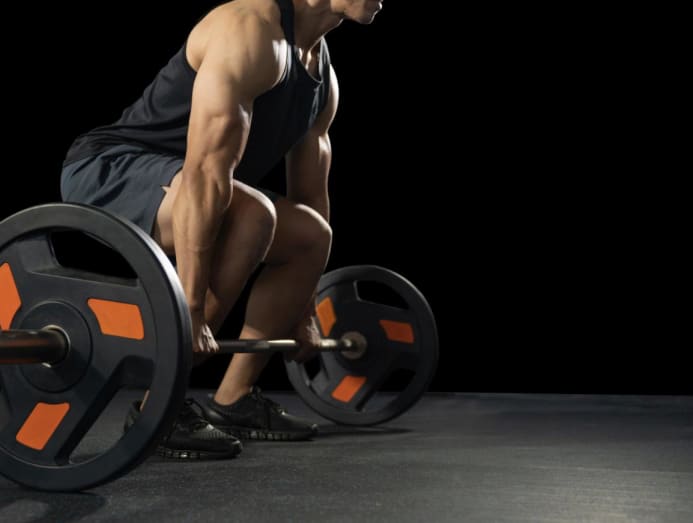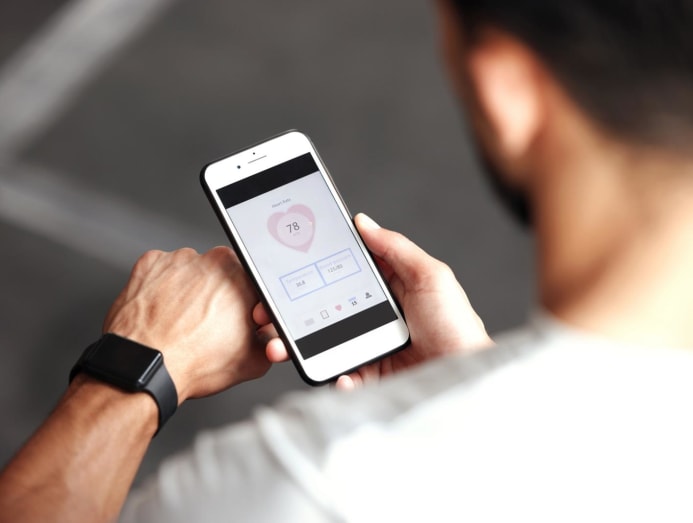Steps, distance, time or heart rate? What should you monitor to track your fitness progression?
Other than keeping you motivated and uninjured, tracking your progress and adjusting the exercise regime is similar to how doctors adjust medications to treat a condition.

(Photo: iStock/Nastasic)

This audio is generated by an AI tool.
If you’ve just started an active lifestyle, you might have a mixed bag of thoughts and emotions as you’re cycling on the park connector, or repping out your gym workout: “Yes, I’m finally doing it! But is this enough? How long more before I don’t suck at this?”
Which, of course, brings us to the subject: What is the best way to monitor your fitness progress? Should you aim to clock 10,000 steps a day? Or should you put in at least 150 to 300 minutes of moderate-intensity aerobic activity per week? And what’s this you hear about exercising at a certain percentage of your maximum heart rate?
Whether your goal is to train for a marathon or simply not pant when taking the stairs or groan when getting up from your office chair, it can be confusing which of those metrics to follow. Adding to that confusion is a plethora of smart phones and wearables that claim to monitor everything… well, except maybe your level of resolution to not skip a workout.
WHAT ARE THE METRICS THAT WE CAN USE TO TRACK?
Let’s start with the one the Health Promotion Board (HPB), and maybe even your doctor, have been telling you about: Aim for at least 150 to 300 minutes of moderate-intensity aerobic activity per week.

That duration isn’t randomly plucked from the air but is “based on research showing that risk reduction in cardiovascular and metabolic health was maximal around 150 minutes per week of moderate to vigorous intensity aerobic activity”, said Adjunct Assistant Professor Ivy Lim, the head and senior consultant from Changi General Hospital’s Department of Sport & Exercise Medicine.
“Although more physical activity is associated with more health benefits, the relative risk of mortality tapers off beyond 300 minutes of moderate to vigorous intensity physical activity weekly,” she said.
As for the intensity level, you can get more specific than relying on your arbitrary sense of exertion. “Moderate intensity can be defined as 64 to 75 per cent of one’s maximal predicted heart rate,” said Adj Asst Prof Lim. “Vigorous intensity can be defined as around 75 to 95 per cent of one’s maximal predicted heart rate.” If you’re wondering, the maximal predicted heart rate can be estimated by subtracting your age from 220.
What about the popular 10,000-steps-a day challenge that every senior you know seems to be participating in? How did that come about? It was thanks to a marketing campaign about the earliest pedometer, manpo-kei, which translates to 10,000 steps meter, that was rolled out at the 1964 Tokyo Olympics. The pedometer was officially launched in 1965 with the aim of combating obesity in Japan.

“It was a number that was easy to remember and a generally achievable measure for the general public to understand and embark on,” said physiotherapist Mok Hwee Yin from Tan Tock Seng Hospital’s Department of Physiotherapy. “In Singapore, the HPB further popularised the 10,000-steps-a-day goal with the launch of the National Step Challenge campaign in 2016,” she said.
When it comes to strengthening exercises, the guideline is to aim for muscle-strengthening activities at least two times a week, said Adj Asst Prof Lim, that involve all major muscle groups at moderate or greater intensity. “The intensity can be estimated to be a five to six, on a scale of one to 10, based on an individual’s personal capacity,” she said.
“Bodyweight exercises such as push-ups and calf raises are easy to start with, and progression can be via the addition of light weights to achieve the same or higher intensity of a particular strength exercise,” said Adj Asst Prof Lim. If you’re using weight machines or free weights, she said, aim to perform:
- Eight to 12 repetitions per set
- Two to four sets
- Use a resistance at 60 to 70 per cent of your one-repetition maximum (or 1-RM, the maximum weight that you can lift for one single repetition)
- Incorporate a rest interval of two to three minutes between sets
If you’re training for endurance, said Adj Asst Prof Lim, aim for a higher number of repetitions (around 15 to 25 repetitions) for one to two sets, and with a shorter rest interval. “The resistance should not exceed 50 per cent of 1-RM.”

WHY SHOULD YOU TRACK YOUR WORKOUTS TO BEGIN WITH?
First, tracking the right metrics can help you reduce the risk of injuries by not over-doing your exercises, said Kelvin Teo, the head of functional training at RetroFit.
And if you’re put on an exercise regime by your doctor, “metrics offer an objective baseline to which healthcare and fitness providers can use to monitor and prescribe physical activity for individuals”, said Adj Asst Prof Lim. “It’s similar to how we may adjust medications to treat a condition.”
Even if you’re exercising on your own, tracking your metrics can empower you on your fitness journey, said Mok. “They provide a sense of accountability, helping you determine if you're achieving the prescribed intensity of exercise or physical activity.
“Moreover, tracking metrics over time can be a powerful tool for self-motivation as it allows you to see your progress and encourages you to increase your activity further and improve your health,” said Mok.
WORKOUT DURATION, DISTANCE, NUMBER OF STEPS, HEART RATE: WHICH SHOULD YOU TRACK?
It’s about understanding the type of exercise you do. “For aerobic activities such as basketball and running, you may wish to track your heart rate, duration and/or distance, if applicable,” said Mok. “For strength training, you may want to track the weights used and how many repetitions you are able to achieve.”
Your goal is another deciding factor, said Teo. “For instance, if you want to complete a marathon, a simple way of structuring your workouts would be to include mileage work, in which the primary metrics are distance and duration,” he said.
If you’re aiming to get more active, simply taking more steps would suffice, Teo said. “For general fitness, it's more important to keep the activity consistent.” Fitness newbies can also increase the frequency of their physical activity, said Adj Asst Prof Lim. “For example, start brisk walking three times a week for 20 minutes, and then increasing to five times a week.”
For regular exercisers aiming to progress in their workouts, Mok suggested tracking your heart rate. “Monitoring the heart rate can provide valuable insights into your exercise intensity and ensure you stay within your target heart rate range.”

While you can roughly calculate the appropriate heart rate range to exercise within (220 minus your age to get your maximal predicted heart rate, then apply the appropriate percentage to it), Mok suggests consulting your physiotherapist as there may be other factors that can affect your heart rate range.
Another thing to note: “If you’re taking medications that can affect or slow down your heart rate, check with your doctor or physiotherapist as the heart rate recommendations mentioned above may or may not be accurate for you”, added Mok.
What about strengthening exercises? What are the metrics to track? Track your training load or weight as improvements can be measured by your ability to move weight over time, said Teo. “Simple metrics can include load (amount of weight used), repetitions (how many times you are able to do an exercise in one set) and sets. Multiplying these will give you the volume for each workout,” he said. “You’ll know if your training is effective if the volume trends upwards.”
WHAT ABOUT SPORTS SUCH AS BADMINTON, FOOTBALL OR EVEN HIKING UP BUKIT TIMAH?
For sports, said Teo, the effort levels are usually at moderate intensity at least. “Going by the HPB guidelines of 150 minutes of moderate-intense activity, tracking minutes as part of your weekly activity will be the most relevant,” he said.
If you’ve been hiking up Bt Timah every weekend, and wondering how best to monitor your progress, here’s what Teo advised: “Since increasing the gradient increases the heart rate, monitoring your heart rate and minutes can tell you how long you are able to sustain such an effort level,” he said.
“Generally, the fitter you are, the long you can sustain efforts at higher intensity. For this, you can use the ‘flights climbed’ metric on your smartphone to help track this.”

DO WE HAVE TO HAVE A SMART DEVICE OR WEARABLE TO TRACK OUR PROGRESS? WHAT ARE THE COMMON MISTAKES WHEN USING THESE DEVICES?
No, you don’t really have to invest in an expensive smart watch or other wearable. “Your volume of exercise can be easily monitored using the FITT principle (frequency, intensity, time and type),” said Adj Asst Prof Lim.
“The intensity can be gauged using the talk test (you should be able to talk but not sing at moderate intensity; you’re unable to say more than a few words without catching a breath with vigorous intensity), or by checking your pulse rate against a watch with a second hand.”
While wearable devices do let you track your exercise regime and daily physical activities easily, the lack of user compliance can affect accuracy. “A fitness watch should be worn snugly around the wrist. If placed too loosely, it may affect the heart rate and steps being measured,” said Adj Asst Prof Lim. “Whether a phone is held in the hand or placed in one’s pocket can also affect the data captured.”

It is also common to get “overly excited or ambitious about these metrics” monitored by your shiny new gadget, said Teo. “This can lead to overexertion, which can cause injuries.”
Where you work out can be a factor for these gadgets’ accuracies as well. “Certain devices may be better at tracking certain sports, for example, running vs swimming,” said Adj Asst Prof Lim. “Some devices rely on GPS to measure distance and this may be affected when the signal is blocked by tall buildings.”
Another common mistake is zeroing in on just one metric instead of looking at the activity in its totality, said Mok. For instance, many people use the 10,000-steps goal as it is the easiest to track using any smartphone. But they aren’t aware that this only informs them of the number of steps taken – and not other metrics such as intensity, she said.
And don’t think we don’t know about your cheating. For example, there are individuals who shake their wearable devices to clock in steps instead of actually walking. “It doesn't enhance one's fitness or health status,” said Teo.






